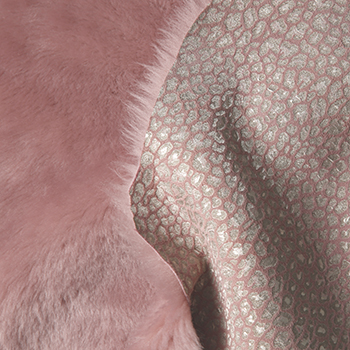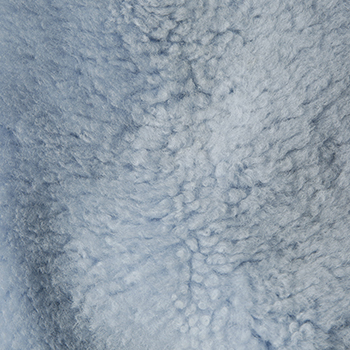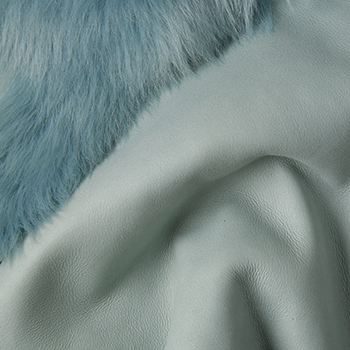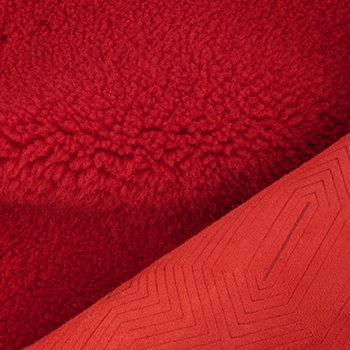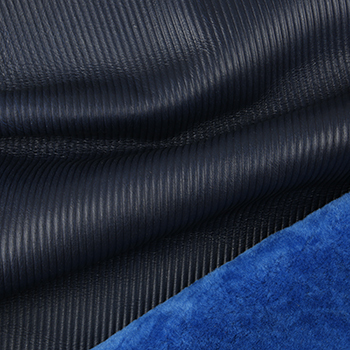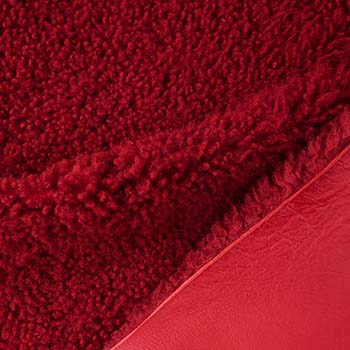Leather know-how: sheepskin hides The - Leather - Leather
For a number of seasons now, designers have been exploring the many facets of sheepskins. Aesthetic, responsible and high-performance, they are not only used to produce casual coats for cold temperatures, but also more urban outerwear and items from the Bag & Shoes segment.
The characteristics of sheepskins
Sheep hides meet the same criteria of robustness and breathability as leather as well as boasting unrivalled thermal properties, meaning they offer optimal protection from the cold, wind, snow and damp.
Their specific features come from their double-sided quality. Once restricted to only being used with the wool on the outside, it has become more widespread to leave the wool on the inside, opening up the scope of possibilities in terms of aesthetic and creative finishes.
Read on for a round-up of the various techniques used by tanneries to offer developments that are ever more high-quality and creative!
The various tanning techniques
One of the specific characteristics of sheepskin leathers is the need to ensure both sides of the hide are treated carefully, which requires great expertise from specialised tanneries and furriers. In contrast with classic leathers, they are, by definition, not limed, nor plucked or shorn. The mineral and vegetal tanning methods are similar to those used for leather, but with specific features linked to the animal’s coat.
Vegetable tanning gives softer, greyer colours than other tanning techniques. Known to be safe for use against the skin and recognised as such by the medical world, vegetable-tanned sheepskin is often used for the fragile skins of new-born babies and the elderly.
The animals and their specific features
Sheepskin leathers are characteristic for the many races of animals used, producing a vast palette of aesthetic finishes and specific uses. Therefore, the skins are to be chosen according to the desired end product and finish. To define these properties, we can identify two criteria: the origins of the animal and the specific characteristics of its wool.
The origins of sheepskins
The Merino sheep, probably one of the best-known races, mainly comes from France and Spain as well as Australia and New Zealand. It is renowned for the softness and density of its coat. The Australian and New Zealand hides are larger. They are preferred for clothing use and for decoration.
South American coats can be interesting when designing reversible products, such as flying or bomber jackets for example, which make good use of leathers that have a cracked and authentic appearance.
Icelandic skins, appreciated for their rough, curly wool, are used for heavy winter coats to snuggle into, or for rugs and blankets indoors. Other sources stand out.
The Tuscan variety has long, soft wool while the Bearnaise lamb, like the Mongolian lamb, has curly wool – the former is more rustic, the latter is lighter and ethereal. The two can easily be used in leather goods, on bags or on high boots combined with crepe soles.
The races and the specific features of their wools
The races and the specific features of the coats determine the type of curls and wool, their appearance and their finishes.
In high demand from designers this season, the classic curly lamb gives soft curls ideal for coats or sleeveless jackets with an almost teddy-bear finish, while the Lacaune race offers tighter corkscrew curls with a rustic appearance, ideal for a more vintage style. Whereas the mouton doré has a straight, silky coat, and shorn, carded lamb has a felt-like finish suggesting softness and comfort.
Dyeing and finishes
Dyeing sheepskins
Another way of standing out is with the colouring, a crucial stage in the creative process for sheepskin leathers. Once again, the double-sided aspect offers a multitude of possibilities. It is possible to only dye only one side, or to dye each side differently.
The flesh side gives a delicate, suede finish which when combined with pastel tones will renew the most classic sheepskin boots and bags. An outer nappa finish produced using a sprayed reticulated pigment is ideal for more urban coats with simple lines. It offers intense colour schemes and brings a contemporary touch to products.
Some tanneries use a variety of temperatures when dyeing sheepskin. The skin absorbs the colour when applied cold, whereas the wool only absorbs it when it is heated. This gives scope for innovative recipes with imaginative finishes: Tie & Dye or two-tone methods used on oversized coats to give a very bold look, or on miniature bags for a more playful appearance.
The finishes of skins
In addition to dyes, there are also other finishes that can be used on the surface of the skins. Screen-printing, embroidery and laser are leather decoration techniques used to create a wide range of products. They require great expertise and often mean tanneries have to team up with printing specialists. Just like for textiles, printing can be manual, digital or screen-printed. On sheepskins working the leather side, printing is a favoured option for leather goods.
Borrowing from the codes of Sportswear, bonding textiles such as crackly nylons or organza creates hybrid products that combine Tech and Luxury. Another technique, the so-called “needle punch”, uses a machine that pierces the wool to make the leather visible, and can produce an endless choice of patterns rather like the stitches in knitwear.
To further enhance your knowledge of leather, take a look at our articles on leather know-how as well as our A-Z leather glossary.
You can also find all of the items in this article on our Marketplace, to continue your product development.
